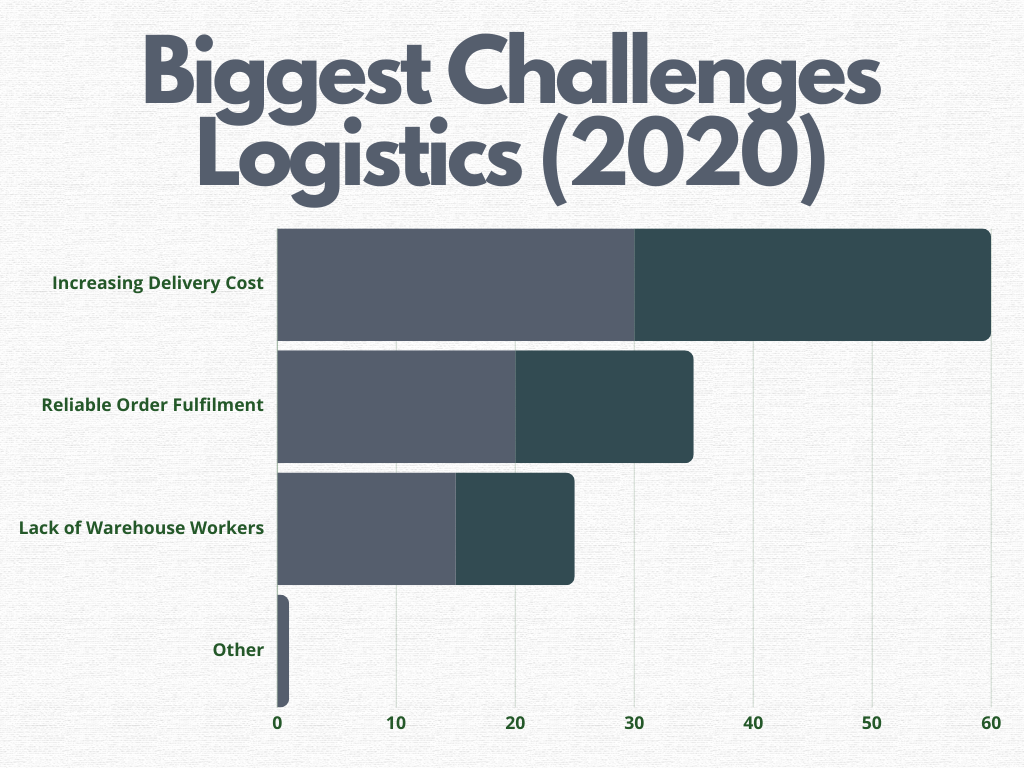Efficient dock operations are critical for all businesses, especially for those that deal with regular shipments and inventory. These include imports and exports of goods.
Managing the transfer of massive amounts of goods has its own challenges. Inclement weather, warehouse schedules, and accidents can cause delays in delivering shipment. Managing these complex challenges while meeting customer expectations can be hard. Doubly so without the right systems in place.
This is where dock scheduling software comes in. By streamlining schedules of vehicles and transport, dock scheduling software can improve customer satisfaction.
Table of Contents
Maximizing Timely Arrival: A Logistics Problem
Currently, the US is experiencing a shipping problem. Ports all over the country continue to handle unprecedented amounts of shipment. Total sales in 2021 have exceeded $4.6 billion (77 percent). This is up from about $835 billion (22 percent) and growing year over year. Since then, imports into the U.S. have increased by 1.3 percent and increased by about $506 billion (22 percent). Meanwhile exports have grown by more than $329 billion (23 percent) from 2020 to 2021. This increase has seen delays in shipping and management.
To deliver the best customer experience, businesses need timely delivery. Easy-to-use dock management software helps lessen wait-times, reduce missed customer orders, and manage the arrival and departure of cargo easily.
This minimizes detention fees by up to 50% as delays are significantly reduced. The streamlined process ensures customers receive their shipments faster, leading to improved satisfaction.
Keeping track of multiple shipments can be daunting. With the right tools, this logistical problem can be an opportunity to improve.
Necessary Dock Scheduling Software Functions
Choosing the right dock scheduling software can be daunting. Several options are in the market with different capabilities. The right docking software should have the following features:
Accurate Estimated Time of Arrivals
Accurate ETAs powered by dock scheduling software optimize workforce planning. Managers can accurately determine:
- Number of workers needed for receiving/loading
- Shift timings and required man-hours
- Timelines for inventory put-away
This results in lower operational costs and increased labor use. Workers are more productive since they’re not idle. Customers also enjoy prompt service.
Sophisticated algorithms in dock scheduling systems have several advanced functions. These includes:
Optimized Shipping and Receiving:
- Efficiently manage the transportation of goods.
- Streamline the process of receiving and dispatching shipments.
- Utilize advanced logistics strategies to enhance overall shipping operations.
- Employ technology for real-time tracking and monitoring of shipments.
Reduced Detention Charges:
- Minimize delays in loading and unloading processes.
- Implement effective scheduling to optimize the use of transportation resources.
- Enhance communication between stakeholders to prevent unnecessary detention.
- Utilize data analytics to identify and address bottlenecks in the supply chain.
ERP and TMS Integration:
- Combine Enterprise Resource Planning (ERP) and Transportation Management System (TMS) for seamless data flow.
- Integrate financial and operational information from ERP with TMS for a unified business view.
- Enable automatic sharing of relevant data between ERP and TMS to eliminate manual input and reduce errors.
- Enhance decision-making by having comprehensive insights into both business processes and transportation activities.
- Streamline workflows by synchronizing information across the organization, leading to improved efficiency and cost-effectiveness.
By accounting for uncertainties and streamlining processes, the software provides reliability not possible in manual scheduling. This enhances yard planning and customer service.
Proactive Planning for Resources
Accurate ETAs allow proactive planning of dock resources like labor, equipment, and staging space. For example, yard managers can optimize:
- Assignment of dock doors and space
- Equipment like forklifts needed for loads
- Labor shift planning for peak arrival times
With resources aligned to the schedule, operations are smooth and efficient. Customers enjoy the service excellence this enables.
Minimizing Errors and Disruptions for Reliable Operations

Accurate automated scheduling sets the stage for optimized operations. But dock scheduling software takes it further by minimizing errors and disruptions. With manual scheduling, human errors can cost businesses up to 5% of their annual revenue.
By automating scheduling, the software reduces downtime by 20%. This means fewer operational disruptions, so customers enjoy consistent and reliable services. When operations happen seamlessly, customer satisfaction flourishes.
Preventing Scheduling Errors
Dock scheduling software eliminates human errors like:
- Inaccurate appointment times.
- Double-booking dock doors.
- Mismatched resources for loads.
- Data entry mistakes.
Automated checks and controls prevent such issues. Alerts notify managers to avoid disruptions. This promotes schedule integrity.
Adapting to Uncertainties
The software rapidly adapts to uncertain events like:
- Bad Weather Delaying Arrivals: Specific weather and seasons can cause interruptions. Inclement weather conditions can cause delays from all areas of the supply chain.
- Equipment Breakdowns: Warehouse equipment failure can cause delays and accidents. Delays and business loss due to wreckage can cause massive loss.
- Sudden Volume Spikes: Increased demands during peak seasons can cause delays in shipment. Without the right scheduling software to manage customer demands, businesses risk customer frustration. Sudden volume spikes can cause decreased customer satisfaction.
- Scheduling Input Errors: Mistyped inputting errors in scheduling can significantly delay services. To minimize interruption of services, employ an automated scheduling software for less errors.
Automated scheduling engines quickly optimize plans. This minimizes downtime and ensures timely transportation.
Frequently Asked Questions (FAQs)
Can dock scheduling software integrate with our existing systems?
Yes, leading dock scheduling systems are designed to integrate with TMS, ERP, and other legacy systems through APIs. This enables continuity with your current technology.
How long does it take to implement dock scheduling software?
Implementation typically takes 4-6 weeks based on the complexity of operations. Though quality software and training can make this timeframe smaller.
It may take longer due to integration requirements. While expert assistance is recommended, the process is straightforward for most businesses.
Are there industry-specific benefits of using dock scheduling software?
Yes, industries like retail, CPG, pharmaceuticals, and 3PLs that rely on high shipment volumes and dock activities see tremendous advantages. Using dock scheduling software improves shipment of all kinds.
Achieving Efficient and Customer-Centric Dock Operations
Dock scheduling software is crucial for customer satisfaction. Making sure timely service and transportation of goods improves business’. It lends reliability and efficiency to dock operations.
Businesses dealing with regular freight shipments should consider implementing dock scheduling systems. This is to improve logistics while improving the customer experience. The time and cost savings combined with happy customers make this technology a wise investment.





